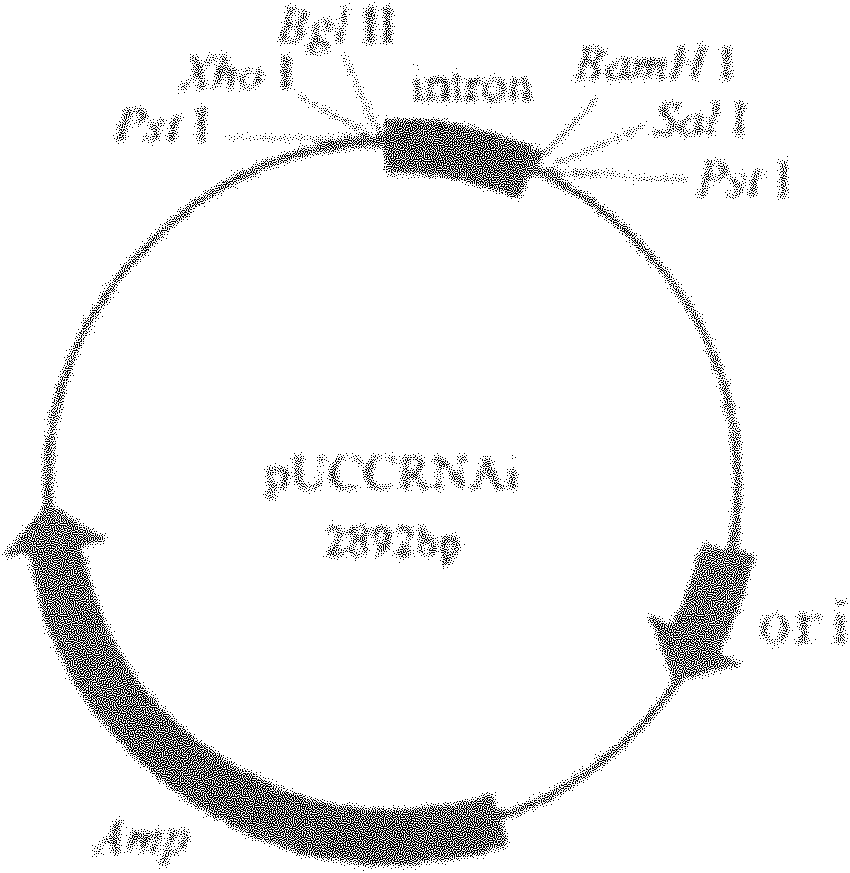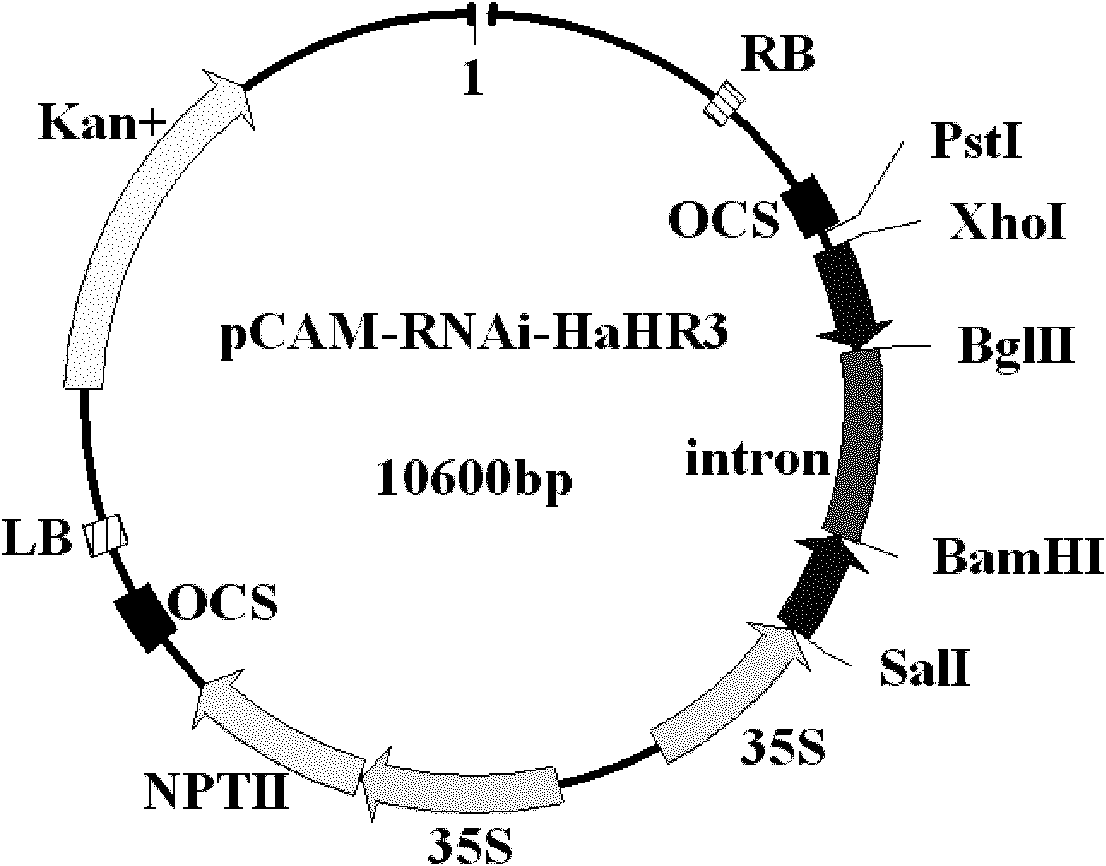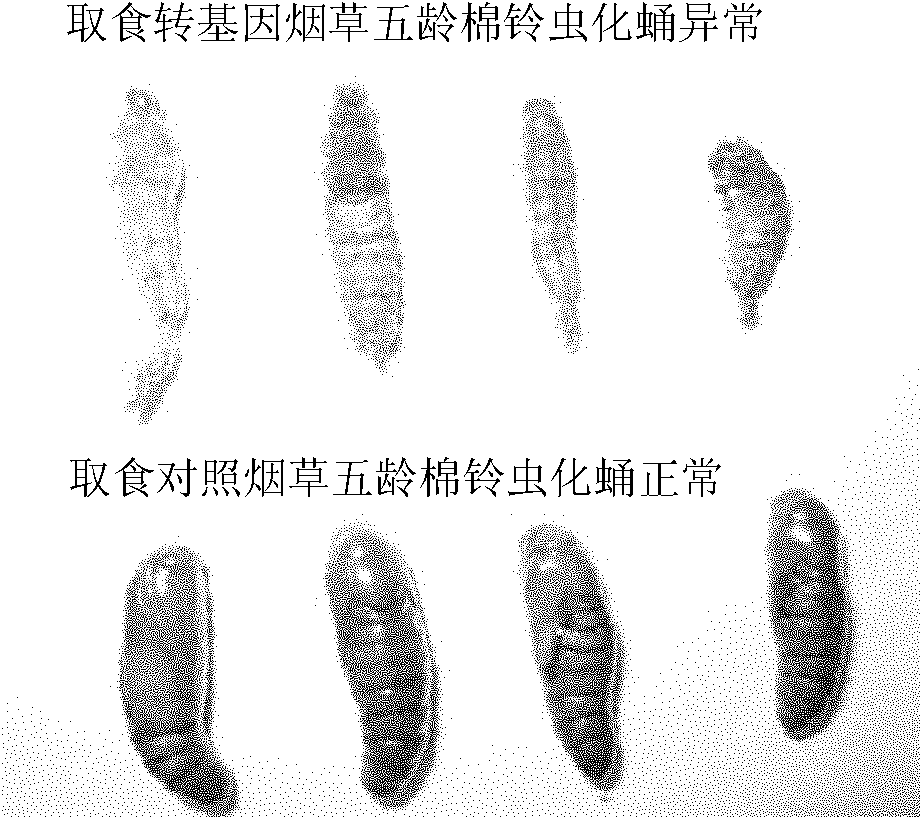Method for cultivating plant resistant to cotton bollworm by utilizing RNAi
A technology of cotton bollworm and RNA interference, applied in botany equipment and methods, DNA/RNA fragments, plant regeneration, etc., to achieve the effect of wide application prospects
- Summary
- Abstract
- Description
- Claims
- Application Information
AI Technical Summary
Problems solved by technology
Method used
Image
Examples
Embodiment Construction
[0020] The present invention is further set forth below by embodiment.
[0021] Step 1. Cloning of the coding gene HaHR3 of the cotton bollworm molting regulatory transcription factor
[0022] The total RNA of the 5th instar larvae of cotton bollworm was extracted, and its quality was determined by electrophoresis and ultraviolet detection, and then stored for future use. According to the HHR3 gene sequence (AF337637) registered in GenBank, a pair of specific primers were designed for PCR amplification of the target gene, among them, P1: 5'-ATGAACAACAACCAGTTCCACG-3', P2: 5'- TTAACCGTGGGTGTAGTCCAGG-3'. Using the pair of primers and the total RNA of the cotton bollworm as a template to carry out RT-PCR, amplified to obtain a DNA fragment of about 1600bp. The RT-PCR product was purified and cloned into the pMD19-T vector, and the positive clone was picked for PCR identification, and a fragment with the expected size was obtained. Six positive clones with correct PCR identifica...
PUM
 Login to View More
Login to View More Abstract
Description
Claims
Application Information
 Login to View More
Login to View More - R&D
- Intellectual Property
- Life Sciences
- Materials
- Tech Scout
- Unparalleled Data Quality
- Higher Quality Content
- 60% Fewer Hallucinations
Browse by: Latest US Patents, China's latest patents, Technical Efficacy Thesaurus, Application Domain, Technology Topic, Popular Technical Reports.
© 2025 PatSnap. All rights reserved.Legal|Privacy policy|Modern Slavery Act Transparency Statement|Sitemap|About US| Contact US: help@patsnap.com



